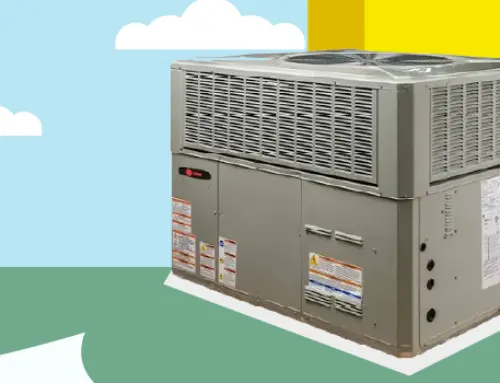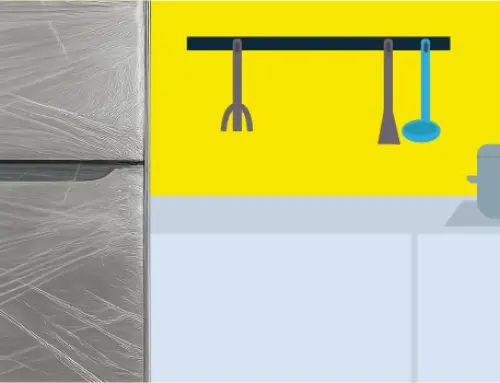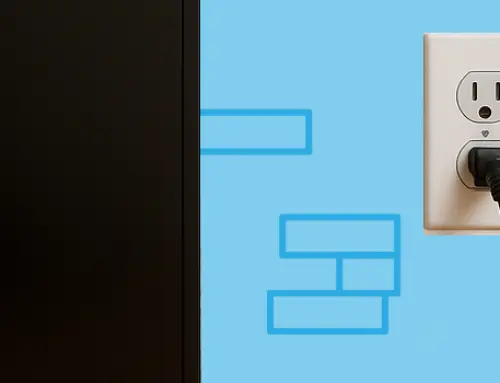What Uses the Most Electricity in a Home?
by Tyler Castle
21.1 min read

Electricity bills can sometimes come as a surprise, but understanding which appliances are using the most power in your home is the first step in taking control of your energy usage. Whether you're looking to cut down your energy bill or you're just curious about which appliances are power-hungry, understanding what uses the most electricity in your home is a smart place to start.
Not all appliances are created equal—some are silent energy hogs even when you're not using them. In this guide, we'll break down which appliances use the most electricity, compare common household items side by side on their energy consumption, and share some practical tips to help you save energy without sacrificing comfort or convenience.
When Was Electricity Invented in Homes?
Electricity was invented in home in the United States in the late 1800s. A major breakthrough came in 1878, when Thomas Edison—renowned for his many inventions—set up the first private electric system in his own home. This landmark moment ignited a widespread movement, paving the way for electrification to expand far beyond American borders.
In September 1882, Thomas Edison's Edison Illuminating Company opened the Pearl Street Station in lower Manhattan, the first commercial power plant, providing electricity to homes and businesses in the area. Well into the 1900s, many Americans still relied on gas lamps to light their homes. By 1925, just 50% of households in the U.S. had access to electricity.
In 1935, President Franklin D. Roosevelt signed an executive order establishing the Rural Electrification Administration (REA) to oversee the expansion of electric service into the more isolated parts of the United States. Through this initiative, Congress granted the REA authority to issue loans that would help fund the development of infrastructure needed to generate and deliver electricity to rural areas.
What Is the Average Electricity Usage per Household?
In the U.S., the average home uses about an average of 899 kWh per month.
A home's electricity consumption can differ significantly based on its size, the number of occupants, and the types of appliances in use. Understanding your household's kilowatt-hour (kWh) usage – how much electricity your home uses – can give you a clearer picture of your electric bill, help you highlight opportunities to cut back on energy, and serve as a helpful starting point for sizing a potential solar energy system.
Tracking your electricity usage—whether through your utility provider's dashboard, a smart home monitor, or monthly bill comparisons—puts you in control of your energy costs and opens the door to long-term savings.
What Uses the Most Electricity in a Home?
Appliances are the root of any well-functioning home and are the leading causes to high energy bills. If you're wondering what uses the most electricity in your home when it comes to appliances, let us do the work for you:
1. Heating and Cooling (estimated energy consumption is between 45–50%)
Appliances in the heating and cooling category are by far the largest energy consumer in your home. Furnaces, air conditioners, and heat pumps are essential but power-hungry—especially if your home isn't well-insulated or you're using outdated systems.
While these appliances use a lot of energy, if your home has poor insulation, leaky ductwork, outdated equipment, and a malfunctioning thermostat, this can all spike your energy usage from these appliances and lead to energy loss and higher bills.
According to Energy.gov, a programmable thermostat and regular HVAC maintenance can significantly reduce your usage with these appliances.
2. Water Heater (estimated energy consumption is 12%)
Your water heater operates around the clock to ensure a steady supply of hot water for daily tasks like showers, laundry, and dishwashing, so it's no wonder it uses so much energy! Traditional tank heaters are less efficient than newer tankless or ENERGY STAR-certified models. This is because tank heaters continuously heat and store water—even when it's not being used—leading to unnecessary energy consumption.
To improve performance and reduce energy use, consider insulating your water heater tank and pipes. Additionally, lowering the thermostat setting to 120°F can help save energy while still providing comfortable hot water for everyday needs. Regular maintenance and upgrades can go a long way in boosting your water heater's efficiency and lifespan.
3. Lighting (estimated energy consumption is between 9–12%)
Typically, one 100-watt left on for 10 hours uses around one kilowatt-hour of energy. Now imagine that times the hundreds of light bulbs in your home; if you're hosting a party any time soon, the energy can add up.
Though lighting used to be a top energy drainer, the widespread shift to LED technology has reduced its impact. ENERGY STAR LEDs use at least 75% less energy and last 25x longer than incandescent bulbs.
Keep in mind that homes with lots of recessed lighting, exterior floodlights, or older incandescent bulbs will use significantly more electricity. To further reduce your light bulb energy usage, try turning off the light completely when you leave a room and switch to dimmer switches and use darker settings when full light isn't necessarily needed.
4. Refrigerator (estimated energy consumption is 8%)
If you're still wondering what uses the most electricity in a home, move into the kitchen and straight at your refrigerator. Refrigerators run all day, every day—which adds up over time. Older models (10+ years or older) are often the culprits of high energy use since they're the least efficient.
Switching to an ENERGY STAR-certified refrigerator helps you save energy and reduce your utility bills, all while keeping the modern features you need. To save more energy, avoid overstuffing your fridge or placing them near a heat source can reduce efficiency. With more in your fridge, there's less cool air that can circulate which can actually lead the temperature in your fridge to rise.
5. Washer and Dryer (estimated energy consumption is 5%)
Washers and dryers are some more appliances that use the most electricity. Washers use energy to run cycles, but dryers are the real guzzlers—especially electric ones that can draw 1,800–5,000 watts per load —making them one of the most energy-intensive appliances in the home. Frequently washing small loads and high-heat drying cycles drive up usage.
Opting for dryers equipped with moisture sensors can help reduce energy waste by automatically shutting off when clothes are dry. Choosing cold water settings for laundry helps conserve energy, especially since heating water accounts for a large portion of a washer's energy use. Additionally, air drying clothes on a rack or clothesline whenever possible can drastically cut down on energy consumption.
6. Electric Oven & Stove (estimated energy consumption is 3%)
Also on the list of what uses the most electricity in a household, look no further than your oven and stove. 64% of Americans are choosing to cook from home for the majority of their meals. With more people cooking from home, this means the more energy your appliances will consume. Cooking appliances use bursts of high energy to operate and this is especially electric ovens and stovetops which can lead to higher energy consumption.
To minimize energy loss, consider using convection ovens and induction cooktops which are more energy-efficient alternatives. For reheating or small meals, use a microwave or air fryer—they consume significantly less power.
7. Dishwasher (estimated energy consumption is 2%)
Though modern dishwashers are fairly efficient, they are still among the list of what uses the most electricity in a home. Most of their electricity consumption comes from heating water during the wash cycle. Pre-rinsing dishes under running water is another common habit that wastes both water and energy, especially if your dishwasher is designed to handle lightly soiled dishes. ENERGY STAR dishwasher models can save you 18% or more on energy by switching to more efficient models.
Using the eco or energy-saving mode can significantly reduce both water and electricity usage by extending cycle time while using lower temperatures. Similarly, choosing the air-dry setting instead of the heated dry cycle helps cut down on energy without compromising results.
8. TV and Cable Box (estimated energy consumption is 2%)
Flat-screen TVs, gaming systems, and cable boxes may seem minor, but their energy use adds up—especially when left on standby. Larger screens, higher resolutions (like 4K), and gaming consoles draw more power while DVRs and cable boxes often stay on 24/7 further contributing to energy loss.
To cut your losses, consider choosing ENERGY STAR-rated entertainment gear that uses up to 25% more energy-efficient than standard models. For even more energy savings, consider unplugging your TV or game counsel altogether when you know you're going to be out of the house for an extended period of time.
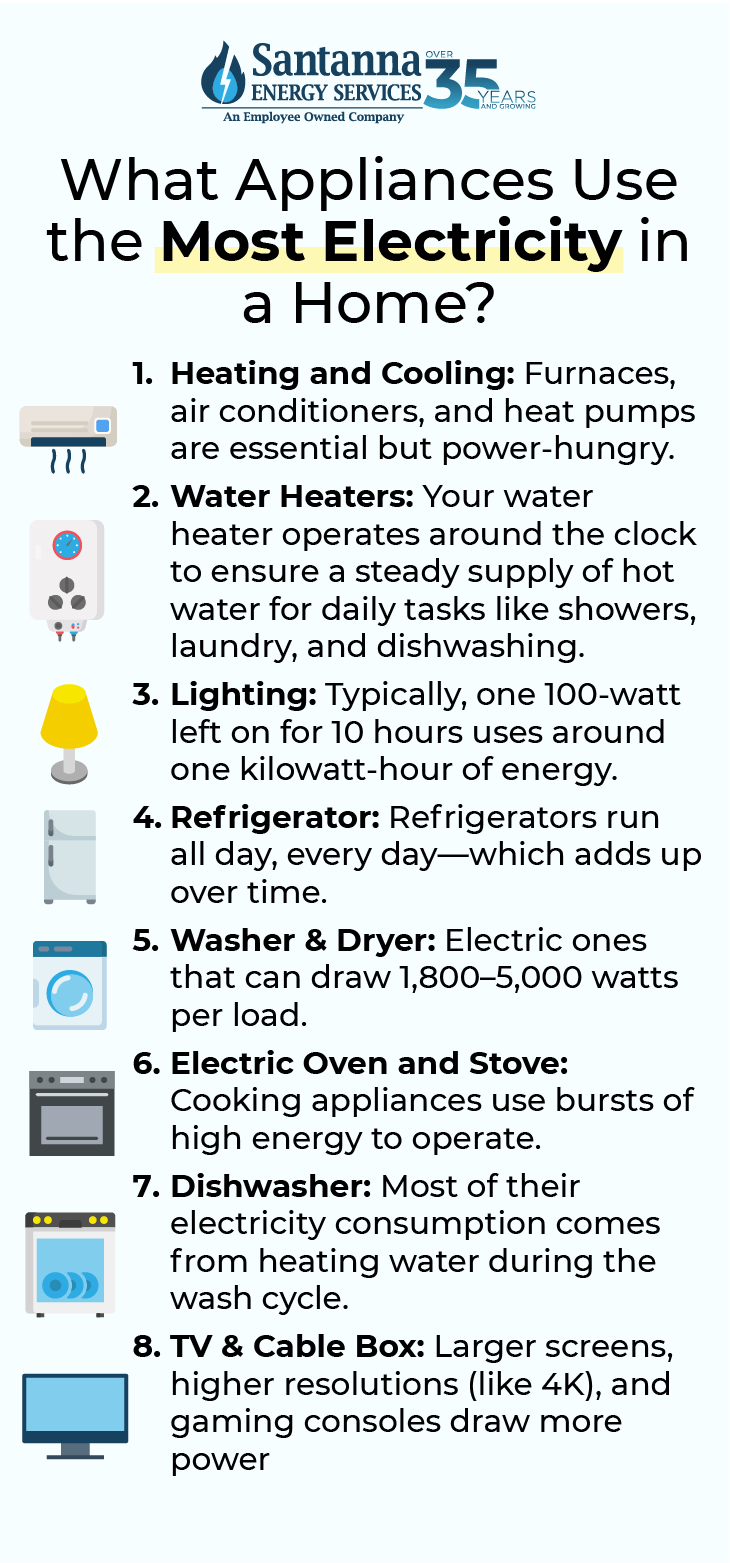
What Appliances Use the Least Amount of Electricity?
While we've chatted about what uses the most electricity in a home, let's take a look at what uses the least amount of electricity! The answers might surprise you:
1. LED Light Bulbs
LED light bulbs are among the most energy-efficient appliances in your home, using only 8–12 watts per bulb—significantly less than traditional incandescent bulbs. In fact, LEDs consume up to 75% less energy and last up to 25 times longer, making them a smart long-term investment for both your electricity bill and the environment. Even if you have multiple LED bulbs throughout your home, their total energy consumption remains minimal compared to other household devices.
2. Phone Chargers
Phone chargers use around 2–6 watts while charging and less than 1 watt in standby. Compared to other appliances in your home, phone chargers draw very little power. Charging your phone daily adds just a few cents to your monthly electric bill, but it's always a good idea to unplug your charger after use. Even when they're plugged into a socket, they still draw energy.
3. Wi-Fi Router
Wi-fi routers typical use around 6–15 watts of energy which makes this home device pretty energy efficient. Their only stipulation is that they do have to run 24/7 which means they're continuously drawing energy. Despite running continuously, routers are designed for low power draw.
Even running nonstop, a router typically costs under $2/month, making it one of the most efficient "always-on" devices.
4. Clock Radio or Digital Alarm Clock
Despite becoming increasingly obsolete, digital alarm clocks don't waste that much energy. Digital alarm clocks typically use around 1–3 watts of power making them highly efficient enough though they run 24/7. Even modern alarm clocks use minimal standby power—less than 1 kWh per month.
5. Ceiling Fans
Ceiling fans typically don't use a lot of energy even when they're run 24/7. Fans have a typical energy usage of 30–75 watts. For example, running at a normal speed at 60.9 watts a ceiling fan only uses around 1 kWh of energy and would cost you less than $0.22 a day to operate. Compared to air conditioning, ceiling fans provide a cooling effect at a fraction of the cost.
What Factors Influence Your Household Electricity Usage?
While it's hard to find the exact energy usage of your household appliances and break down exactly what uses the most electricity in a home. Keep in mind that there's a series of factors that can affect your overall home energy consumption and here are some of the most common:
For instance, home size greatly affects your energy usage. Larger homes generally require more energy for heating, cooling, and need more power for extra rooms and devices. Similarly, more people usually means more devices, more lighting, more laundry, and higher hot water usage. The more people in your home, the higher the overall usage.
Homes in hotter climates often use more electricity due to higher air conditioning needs. In contrast, colder regions may use other heating sources but still have high winter energy demands. This can lead to fluctuations in energy consumption during peak seasons. Older appliances, especially refrigerators, water heaters, and HVAC systems, are less efficient and use more power and can lead to higher electricity bills.
Lastly, how often you cook, do laundry, stream content, or work from home can greatly affect your monthly kWh use. The more you do in your home, the more energy you use.
What Uses More Electricity: A Comparison of Common Appliances
When it comes to managing your home's energy usage, understanding which appliances use the most electricity can help you make smarter choices. From refrigerators and dishwashers to microwaves and space heaters, some devices draw significantly more power than others.
Let's compare some of the most similar appliances and see which ones have the biggest impact on your electric bill:
Which Appliances Uses More Electricity? (Per Day)
| Appliance A | Estimated Monthly kWh A | Appliance B | Estimated Monthly kWh B |
| Dryer | 60 kWh | Washer | 10 kWh |
| Dishwasher | 22.5 kWh | Oven | 25 kWh |
| Microwave | 5 kWh | Air Fryer | 9 kWh |
| Refrigerator | 108 kWh | Chest Freezer | 60 kWh |
| TV | 12 kWh | Computer | 24 kWh |
| Ceiling Fan | 18 kWh | Portable Space Heater | 135 kWh |
| Electric Kettle | 3 kWh | Coffee Maker | 5 kWh |
| Window AC Unit | 180 kWh | Central AC | 630 kWh |
| Electric Fireplace | 135 kWh | Space Heater | 135 kWh |
| Electric Blanket | 36 kWh | Heated Mattress Pad | 27 kWh |
Dryer vs. Washer
While both are laundry essentials, dryers are by far the bigger energy users. Electric dryers use high heat to dry clothes and typically run for longer periods. A standard dryer can draw between 1,800 to 5,000 watts per load. Washers, on the other hand, use much less electricity—especially if you wash with cold water. Most of a washer's energy goes toward heating water, so using cold cycles can make them even more efficient. Overall, dryers use more energy.
Dishwasher vs. Oven
Although ovens are known for their high-power use—especially during long baking or roasting sessions—dishwashers aren't far behind. That's because modern dishwashers use energy not only to clean but also to heat water and dry dishes. The longer and hotter the wash cycle, the more energy it draws. Ovens, in contrast, use energy in concentrated bursts, which can lead to higher peak usage but shorter durations. Depending on the settings you use your oven, ovens can edge out dishwashers in terms of energy consumption.
Microwave vs. Air Fryer
What uses more electricity, a microwave or an air fryer? Microwaves are fast and efficient, using high energy for very short periods. Air fryers, while still relatively efficient, often run longer to achieve the same cooking results. Over time, this can lead to slightly more energy use—even though they operate at similar wattage. For quick reheating, the microwave wins. For crispy, oven-style meals with less time and energy than a traditional oven, air fryers are a solid mid-energy option.
Refrigerator vs. Chest Freezer
Refrigerators run 24/7 and cycle frequently to maintain a stable internal temperature, especially if the door is opened often. Older fridges, or those with worn seals, consume even more energy. Chest freezers, while also running continuously, are designed for better insulation and less frequent access, making them more efficient per cubic foot. If you're storing bulk items or frozen goods, a chest freezer can be a smart, energy-conscious choice.
TV vs. Computer
Wondering what uses more electricity, a T.V. or a computer? Surprisingly, computers, especially desktops or gaming rigs, can draw more electricity than modern flat-screen TVs—particularly if left on all day or used for heavy processing tasks. TVs are more energy-efficient now than ever, with many ENERGY STAR models drawing less than 1 watt in standby mode. Still, binge-watching and gaming sessions can add up fast when paired with consoles and monitors.
Ceiling Fan vs. Portable Space Heater
This is one of the most dramatic comparisons. Ceiling fans use minimal power to circulate air and create a wind-chill effect, making a room feel cooler. Portable space heaters, by contrast, use up to 1,500 watts to heat small areas and can spike your bill if run for hours each day. If you're trying to stay warm efficiently, layering up or using localized heating like heated blankets may be better. Ceiling fans are WAY more energy efficient than space heaters.
Electric Kettle vs. Coffee Maker
Both of these kitchen appliances are low energy users due to their short usage time. Electric kettles boil water quickly and shut off automatically, making them very efficient. Coffee makers, while also low-wattage, often stay on longer due to warming plates or multiple daily uses. Still, both cost less than $1/month to operate in most homes depending on your electricity rate.
Window AC Unit vs. Central AC
Window AC units are affordable and energy-efficient for small spaces, but not ideal for cooling large homes. Central AC systems, while more powerful and convenient, require significantly more electricity—especially in larger homes with poor insulation or outdated ductwork. Smart thermostats and regular filter changes can help offset some of the cost.
Electric Fireplace vs. Space Heater
In terms of energy consumption, these two are neck and neck. However, electric fireplaces often include visual effects like LED flames, which can add a bit more draw. Space heaters are more targeted and typically heat a room faster. Your choice depends on your priority: ambiance or fast, localized warmth.
Electric Blanket vs. Heated Mattress Pad
Wondering what uses more electricity, a heated blanket or a heated mattress pad? Both are excellent low-cost ways to stay warm without heating the whole room. Heated mattress pads often use slightly less electricity because they rely on steady, low-intensity heat. Electric blankets may cycle on and off or be set higher, leading to a bit more energy usage. Either option is much cheaper than running a space heater overnight.
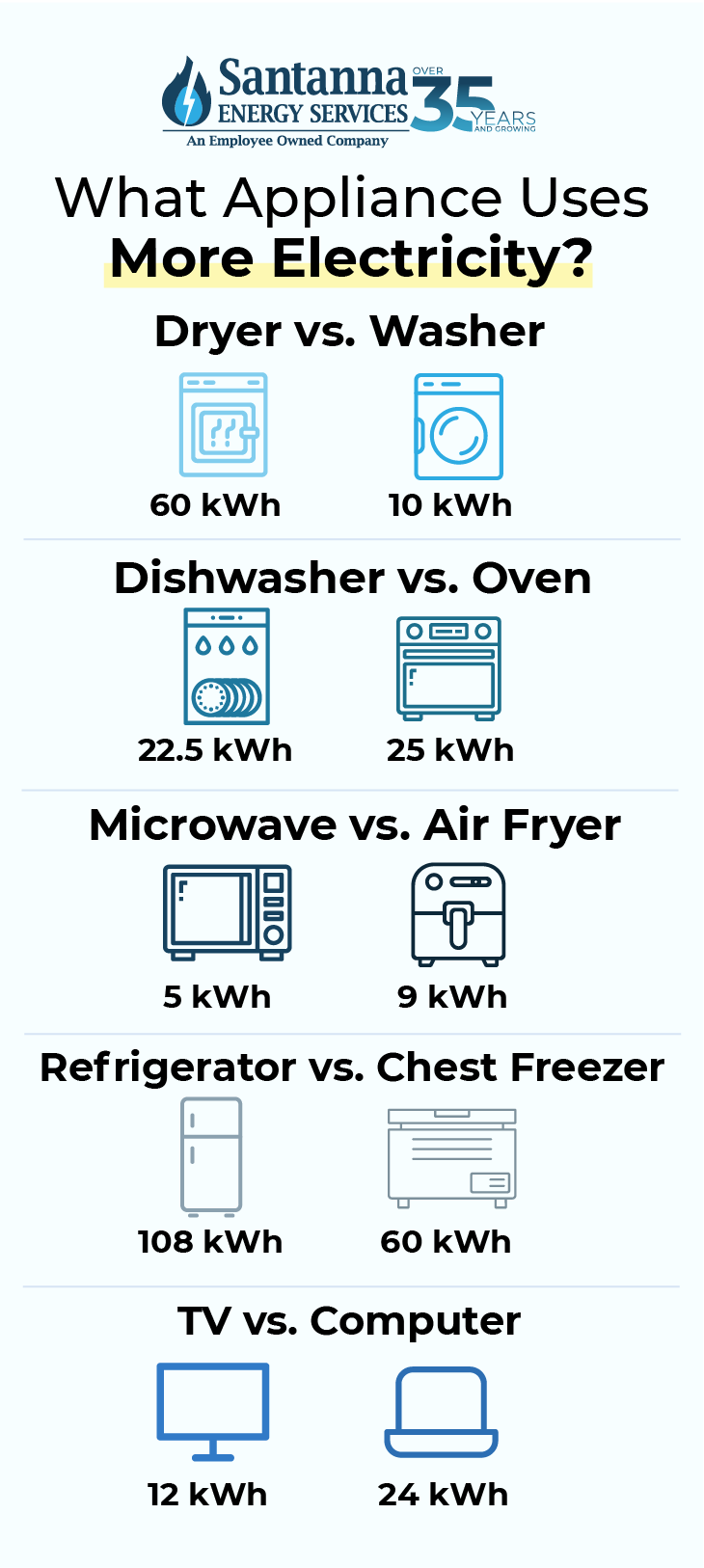
What Appliances Use the Most Electricity on Standby Mode and When Powered Off?
If you're looking to save energy in your home, keep in mind that when devices and appliances are on standby mode or even powered off but still plugged in, they can still consume energy. While their exact energy consumption can be minimal, over time, this can add up especially if you have multiple devices plugged in.
Here are some of the most common devices and appliances that are the biggest energy wasters:
- Cable and Satellite TV Boxes: Set-top boxes often stay semi-active to record shows or power on quickly, drawing 15–45 watts even when you're not watching TV.
- Gaming Consoles (e.g., PlayStation, Xbox): Gaming systems can use 10–30 watts in standby mode to stay online for updates or remote start features.
- Desktop Computers and Monitors: When left in sleep mode instead of fully shut down, these can still pull 5–20 watts around the clock.
- Printers and Scanners: To avoid startup delays, many printers stay on all day, consuming 5–15 watts even when idle.
- Microwaves with Clocks/Displays: That glowing clock on your microwave quietly uses 2–7 watts every hour of every day.
- Coffee Makers (especially with digital clocks or timers): Even when you're not brewing, the small display on your coffee maker can draw 1–5 watts nonstop.
- Chargers (Phone, Laptop, etc.): Plugged-in chargers can still consume 0.5–2 watts just by being connected to the wall, even without a device attached.
- TVs (especially Smart TVs): Smart TVs sip 1–5 watts in standby so they can respond instantly and stay connected to Wi-Fi.
How to Check Which Appliances Use the Most Electricity
If you're trying to cut down on your energy bill or make smarter appliance upgrades, the first step is knowing which devices are using the most electricity in your home. Here's a simple conversion you can use to determine which appliance uses the most electricity:
Take the wattage of the appliance you're looking to calculate (the wattage can usually be found on the appliance itself, on its original packaging, or online by searching the brand and the model). Then multiply the wattage by the hours you intend to use your appliance per day. With that number, divide it by 1,000.
(Wattage × Hours Used Per Day) ÷ 1000 = Daily kilowatt-hour (kWh) usage
Daily kWh × 30 = Monthly usage
Monthly usage × electricity rate = Estimated monthly cost
For almost instant results, use can use an energy monitoring device! A Kill A Watt is a small device that shows how much electricity an appliance uses. You plug it into the wall, then plug your appliance into it. It tells you how much power the appliance uses—even when it's turned off but still plugged in. They're especially useful for discovering phantom loads or estimating the exact energy use of your fridge, TV, gaming console, or microwave.
Want something more advanced? Smart plugs and whole-home energy monitors (like Sense or Emporia) can track energy consumption over time, even sending alerts to your smartphone. Some models can even identify which appliance is running based on its energy signature.
Cut Costs: What Is the Most Efficient Electric Heat?
Electric resistance heating—like the kind you get from baseboard heaters, electric radiators, or infrared panels—is technically 100% energy efficient at the point of use. That means every bit of electricity that enters the heater gets converted directly into heat. Nothing is wasted inside your home, which is why it's often called one of the most efficient types of electric heat.
While the heater in your home may be perfectly efficient, the electricity powering it usually comes from power plants that burn fossil fuels like coal, natural gas, or oil. These plants are only about 30% efficient, meaning a lot of energy is lost during the process of generating electricity and sending it through power lines to your home.
Because of these generation and transmission losses, electric heat often ends up being more expensive than heating systems that burn fuel directly in your home—like natural gas furnaces or pellet stoves. So even though your electric heater is doing its job perfectly, the bigger picture includes how that electricity was made in the first place.
That's why electric heating works best in homes that are well-insulated, use energy-efficient heating technologies like infrared panels or ceramic radiators, or where renewable energy sources (like solar) are used to offset electricity costs. In those cases, you get high efficiency without the high price tag.
What Is the Most Efficient Electric Cooling?
When it comes to electric home cooling, ductless mini-split systems are widely considered the most energy-efficient option available today. According to the U.S. Department of Energy, these systems can deliver cooling (and heating) at efficiencies up to 30% higher than traditional central air systems—especially in homes without existing ductwork.
Unlike central air systems, mini-splits don't rely on ducts, which can waste energy due to air leaks and thermal loss—especially in uninsulated or poorly sealed spaces. Mini-splits allow for individual temperature control in different rooms or zones, reducing energy waste by only cooling the spaces you're actually using.
Similarly, most modern mini-splits use variable-speed compressors, which ramp up or down based on the room's cooling needs. This avoids the energy spike caused by the constant cycling of traditional HVAC systems.
Many mini-split models are ENERGY STAR-rated, meaning they meet strict energy efficiency guidelines and can lead to significant utility bill savings.
While the upfront cost of a mini-split system can be higher than a window unit or portable AC, the long-term savings on your electric bill—combined with potential rebates and tax incentives—make it a smart investment for energy-conscious homeowners.
How To Save On Your Electricity Costs
Saving on electricity costs is easy to do with the right tips. Here are some of our favorites:
- Upgrade to ENERGY STAR® Appliances: Older appliances are some of the biggest energy hogs in your home. Swapping them out for ENERGY STAR-certified models can save you hundreds of dollars in energy over their lifetime.
- Adjust Your Thermostat: Heating and cooling account for nearly half of your home's energy use. Adjusting your thermostat 7–10°F for 8 hours a day (or using a smart thermostat) can save up to 10% a year on heating and cooling,
- Seal Leaks and Insulate: Air leaks around doors, windows, and ductwork waste energy. Sealing gaps with caulk or weatherstripping and adding insulation to your attic or crawl space helps keep warm or cool air in—reducing strain on your HVAC system and lowering your bill.
- Switch to LED Lighting: If you haven't switched yet, now's the time. ENERGY STAR-rated LED bulbs use at least 75% less energy and last up to 25x longer than traditional incandescent bulbs. They also generate less heat, which helps reduce cooling costs in warmer months.
- Lower Your Water Heating Temperature: Water heating is the second largest energy expense in many homes. Set your water heater to 120°F, insulate your water heater tank (if it's older), and consider a low-flow showerhead to use less hot water.
- Monitor and Track Your Usage: Use energy monitors like the Kill A Watt, smart plugs, or whole-home energy monitors to see where your electricity is going. This helps you make smarter choices about what to unplug, replace, or upgrade.
Understanding what uses the most electricity in a home is the first step toward smarter energy habits and real savings. From heating and cooling systems to everyday appliances and hidden phantom loads, every watt adds up. By tracking your usage, making efficient upgrades, and adjusting daily habits, you can take control of your electricity costs—and make your home more comfortable and sustainable in the process.
But managing your energy use isn't just about cutting back—it's about choosing the right energy plan that fits your lifestyle. Explore our plans today and find the one that powers your life with ease.
Tyler is an experienced energy professional, having worked for Santanna Energy Services, for the past four years. He is passionate about renewable energy and believes that diversifying the energy grid is the key to a sustainable future. Tyler is dedicated to supplying consumers with the best possible energy solutions and works diligently to make sure that Santanna can deliver the highest quality service.



